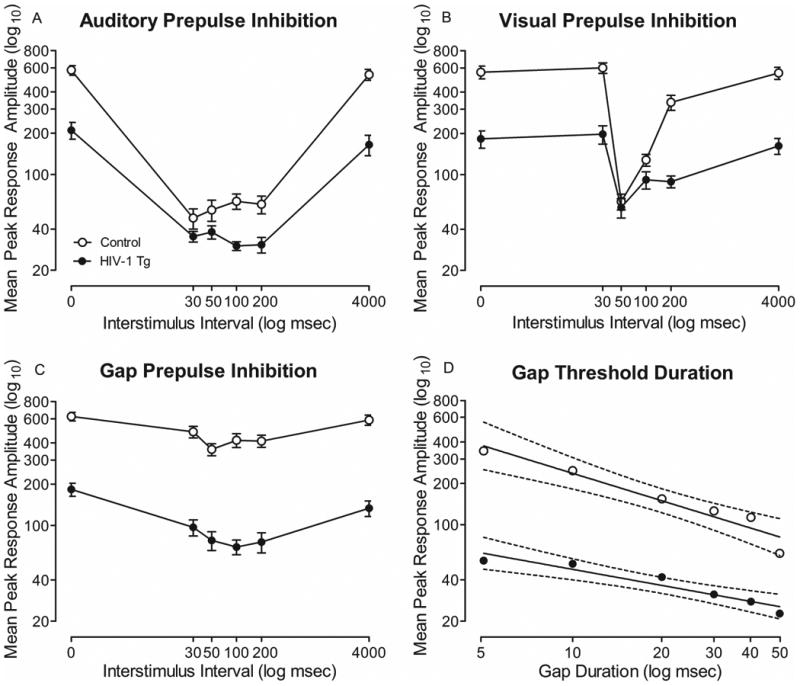Fig. 1.

Mean peak ASR startle response is presented as a function of genotype (HIV-1 Tg or Control; ± SEM or ± 95% CI). (a) In auditory PPI, control animals exhibited maximum peak inhibition at 30 msec, however, HIV-1 Tg animals exhibited a rightward shift to maximum peak inhibition at 100 msec, indicating a differential sensitivity to the manipulation of ISI. (b) In visual PPI, HIV-1 Tg animals exhibited a significantly flatter ISI function, indicating a relative insensitivity to the manipulation of ISI. (c) In gap-PPI, control animals exhibited peak inhibition at 50 msec, however HIV-1 Tg animals exhibited a rightward shift to maximum peak inhibition at 100 msec, providing additional evidence for a differential sensitivity to the manipulation of ISI. (d) Auditory gap threshold detection revealed a significant difference between groups in rate at which mean peak ASR amplitude decreased. Mean peak ASR amplitude decreased significantly more slowly for HIV-1 Tg animals (β=-2.51±0.40) in comparison to control animals (β=-4.46±0.65).
